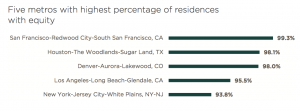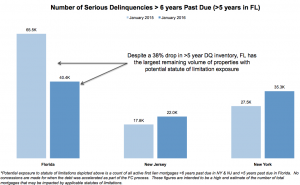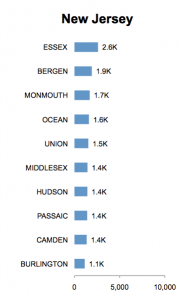We learned nothing from the last financial crisis. The housing market is set to collapse, again, and a key culprit, again, is artificial demand created by government policies.
For starters, mortgage-software firm Ellie Mae reports that the average FICO credit score of an approved home loan plunged to 719 in January (the latest month for which data is available) from 731 a year earlier, and well below 2011’s peak of 750.
It’s a dangerous sign lenders are loosening underwriting standards. Lower FICO scores correlate with higher risk of loan default.
The Federal Housing Administration is a big reason for falling credit scores. So are Fannie Mae and Freddie Mac. The government housing agencies have slashed credit requirements under pressure from the Obama administration — like the Clinton administration before it — to qualify more immigrants and minorities with low incomes and “less-than-perfect credit.”
Meanwhile, home lenders are approving more debt-strapped borrowers. According to Ellie Mae, applicants approved for mortgages in January had an average household debt-to-income ratio of 39%, up from 2012’s annual average of 34%. Borrower debt loads have been creeping higher each year since 2012, when Ellie Mae first started tracking such data.
…
A recent report by the Office of the Comptroller of the Currency, a federal agency that regulates the nation’s banks, warns that declines in mortgage underwriting standards are mirroring pre-crisis trends.
“Underwriting standards eased at a significant number of banks for the three-year period from 2013 through 2015,” the report said. “This trend reflects broad trends similar to those experienced from 2005 through 2007, before the most recent financial crisis.”
Not since 2006, it noted, have lenders taken on so much credit risk, and it says the hazard will continue to grow this year: “Examiners expect the level of credit risk to increase over the next 12 months.”
…
Today’s relaxation in mortgage-underwriting standards is largely a function of government housing-policy changes at FHA, Fannie Mae and Freddie Mac, which dominate the nation’s mortgage activity.
…
All three agencies have slashed down-payment and other requirements under pressure from Obama regulators, who include, most significantly, former Congressional Black Caucus leader and Obama appointee Mel Watt, head of the new Federal Housing Finance Agency, which now controls Fannie Mae and Freddie Mac.
…
Last year, Fannie Mae launched a new subprime-mortgage product called HomeReady that caters to recent immigrants with weak credit and limited income.
The new loan program, which offers “income flexibility,” allows borrowers for the first time to bundle income from roommates and relatives to meet qualifications for income. They only have to put 3% down, and can use gifts from nonprofit groups to subsidize their down payments.
“There is no limit on the number of non-borrower household members who can be present on a single transaction,” Fannie advises originators. And even then there is “documentation flexibility,” a frightening echo of last decade’s “no-doc loans.”
…
Under HomeReady, you can even qualify for a “cash-out refinance” of your mortgage, a type of loan that led to over-leveraging and a wave of defaults during the mortgage crisis.
…
Why would Fannie offer the same kinds of poorly underwritten loans that forced it into bankruptcy? Because HomeReady aligns “with our housing goals” set by Watt, it says in its HomeReady literature. These are the same government affordable-housing quotas that plunged Fannie and Freddie into the subprime market under the Clinton administration.
It’s all part of a government campaign to ease access to home loans for recent Hispanic immigrants — including those living here illegally. In fact, HomeReady caters to illegal immigrants by allowing borrowers to waive Social Security documentation.
…
Home-loan approvals hinge on FICO credit scores, which have a strong track record of predicting risk, says Pinto, who formerly worked as chief credit officer at Fannie Mae. They are the bedrock of the modern financial system.
But the Obama regime views FICO scoring as too strict, “unfairly locking” millions of low-income minorities and immigrants out of homes. So it’s pressuring Fannie and Freddie, which control 57% of primary-home-purchase loans and set the underwriting standards for the entire mortgage industry, to abandon reliance on FICO for a more accommodating standard for evaluating credit risk.



